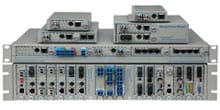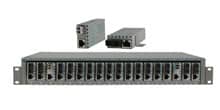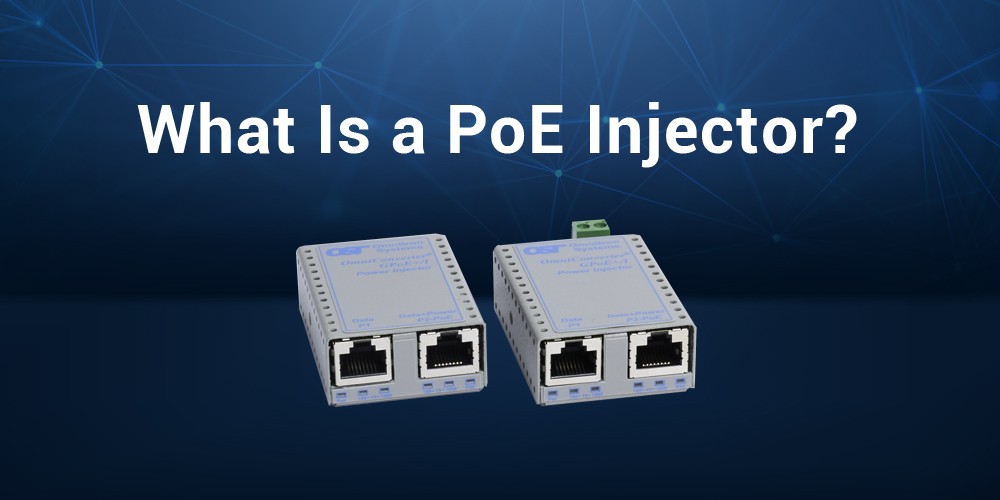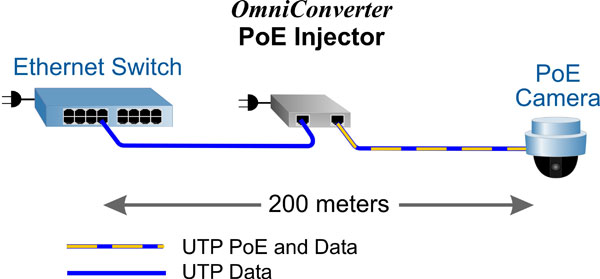- Products
- PoE Media Converters and Switches
- Ethernet & PoE Switches Product Selector
- Multi-Gigabit Ethernet and PoE Switches
- PoE PSE Commercial Switches
- PoE PSE Industrial Fiber Switches
- PoE Industrial Copper Extenders
- PoE Powered Media Converters
- PoE PSE Media Converters
- PoE Extenders & Injectors Product Selector
- Pluggable Transceivers Product Selector
- Product Lines

- iConverter Managed Multi-service Platform
- Copper to Fiber Media Converters
- Ethernet Media Converters
- 10 Gigabit Copper-to-Fiber
- 10/100/1000 Copper to 10 Gigabit Fiber
- 10/100/1000 Copper-to-Fiber with Integrated Management
- 10/100/1000 Industrial Copper-to-Fiber with Integrated Management
- 10/100/1000 Copper-to-Fiber with VLAN
- 10/100/1000 Dual Media Converter with VLAN
- Gigabit Copper-to-Fiber
- 10/100 Copper-to-Fiber with Integrated Management
- 10/100 Industrial Copper-to-Fiber with Integrated Management
- 10/100 Copper-to-Fiber with VLAN
- 10/100 Copper-to-Fiber
- Fast Ethernet Copper-to-Fiber
- Fast Ethernet Redundant Links
- 10Mbps Copper-to-Fiber
- 10Mbps Copper to Coax
- TDM Media Converters
- Serial Media Converters
- Ethernet Media Converters
- Fiber to Fiber Media Converters
- 10 Gigabit Fiber-to-Fiber Converter and Transponder
- 10 Gigabit Industrial Converter and Transponder
- SFP-to-SFP Fiber Converter and Transponder
- SFP-to-SFP Industrial Fiber Converter and Transponder
- Gigabit Fiber to-Fiber with 3 Rs
- 100/1000 Fiber-to-Fiber with 3 Rs
- Gigabit Fiber-to-Fiber
- Fast Ethernet Fiber-to-Fiber with 3 Rs
- Fast Ethernet Fiber-to-Fiber
- OC-3/STM-1 Fiber-to-Fiber
- OC-12/STM-4 Fiber-to-Fiber
- Carrier Ethernet Network Interface Devices
- CE 2.0 - 10G Demarcation NID
- CE 2.0 - 10G Demarcation and Aggregation NID
- CE 2.0 - 10/100/1000 Mult-port NID
- CE 2.0 - 10/100/1000 Mult-port NID with PoE
- CE 2.0 - 10/100/1000 8-Port NID
- SFP NID - Gigabit SFP NID
- microNID - 100/1000 compact NID
- CE 1.0 Service OAM - 10/100/1000 NID
- CE 1.0 Link OAM - 10/100/1000 Copper-to-Fiber NID
- CE 1.0 Link OAM - 10/100 Copper-to-Fiber NID
- CE 1.0 Link OAM - Gigabit Fiber-to-Fiber NID
- CE 1.0 Link OAM - Fast Ethernet Fiber-to-Fiber NID
- CWDM Multiplexers
- T1/E1 Multiplexers
- Ethernet Switch Modules
- Management System
- Chassis Options

- 1-Module Industrial Chassis

- RuggedNet Industrial Switches and Extenders
- Industrial PoE PSE Fiber Switches
- Multi-Gigabit Managed Industrial PoE+/BT Switches
- Multi-Gigabit Unmanaged Industrial PoE+/BT Switches
- 10G Managed 802.3bt PoE Switches
- 10G Unmanaged 802.3bt PoE Switches
- 10G Managed PoE+ Switches
- 10G Unmanaged PoE+ Switches
- 1G Managed PoE+ Switches
- 1G Unmanaged PoE+ Switches
- 1G Unmanaged 802.3bt PoE Switches
- 1G Managed 802.3bt PoE Switches
- Industrial Ethernet Switches
- Industrial PoE Copper Extenders
- Industrial Power Supplies

- OmniConverter Media Converter, Switches and Extenders
- PoE PSE Media Converters
- 10G Multi-Gigabit / Multi-Rate PoE Media Converter
- 10G Multi-Gigabit / Multi-Rate Media Converter
- 10/100 Multi-port PoE+ Media Converter
- 10/100 PoE+ Media Converter
- 10/100/1000 Multi-Port PoE+ Media Converter
- Industrial 10/100/1000 Multi-Port PoE+ Media Converter
- 10/100/1000 PoE+ Media Converter
- 10/100/1000 PoE++ 60W-100W Media Converter
- Industrial 10/100 Multi-port PoE+ Media Converter
- 1U Rack-Mount Shelf
- PoE PSE Compact Switches
- Multi-Gigabit Managed PoE+/BT Switches
- Multi-Gigabit Unmanaged PoE+/BT Switches
- 10G Managed 802.3bt PoE Switches
- 10G Unmanaged 802.3bt PoE Switches
- 10G Managed PoE+ Switches
- 10G Unmanaged PoE+ Switches
- 1G Managed PoE+ Switches
- 1G Unmanaged PoE+ Switches
- 1G Managed 802.3bt PoE Switches
- 1G Unmanaged 802.3bt PoE Switches
- Ethernet Switches
- PoE Copper Extenders
- Single Pair Ethernet Converters
- PoE Injectors

- miConverter Unmanaged Miniature Media Converters
- 10/100/1000 Copper-to-Fiber
- Industrial 10/100/1000 Copper-to-Fiber
- 10/100/1000 Ultra-Compact Copper-to-Fiber
- Gigabit Copper-to-Fiber
- 10/100/1000 Copper-to-Fiber PoE Powered
- 10/100 Copper-to-Fiber
- 10/100 Ultra-Compact Copper-to-Fiber
- 10/100 Copper-to-Fiber PoE Powered
- 18-Module Chassis
- Industrial 10/100 Copper-to-Fiber PoE Powered

- FlexSwitch Compact Switches
- Solutions
- Company
- Support
- How to Buy
What Is a PoE Injector?

Through the use of PoE (power over Ethernet) network devices like PoE switches, PoE media converters, PoE injectors, etc., power and data can be transmitted simultaneously across twisted pair Ethernet cabling. In order to set up low-power devices in places without power outlets, Power over Ethernet (PoE) injectors will be needed as they convert standard AC power from an AC outlet into a regulated DC power signal that is compatible with PoE (Power over Ethernet) standards. Let's explore the intricate details surrounding PoE injectors, their functionality, applications, and how they can elevate your network experience.

How Does a PoE Injector Work?
A PoE injector adds electrical power to the Ethernet data stream, enabling PoE-enabled devices like IP cameras, VoIP phones, and access points to receive data and power through a single cable.
- AC Power Input: The PoE injector receives AC power from a power source, such as a wall outlet or power adapter.
- DC Power Conversion: The injector converts the AC power into DC power using a transformer, rectifier, and voltage regulator. This DC power is typically between 48V and 57V.
- DC Power Input: The injector is powered by a DC power supply through a direct DC power cable directly into the injector.
- PoE Detection: The injector establishes a communication link with the PoE-enabled device over the Ethernet cable. During this process, it detects the device's power requirements.
- Data and Power Transmission: The injector sends DC power and Ethernet data over the same cable. The power is typically transmitted through the unused pairs of the Ethernet cable, while the data is transmitted through the standard data pairs.
- Power Delivery: The PoE-enabled device receives the PoE power from the injector through the Ethernet cable. It uses this power to operate its circuitry and transmit data over the network.
Key Features of PoE Injectors
- Plug-and-play operation: PoE injectors are generally easy to set up and use, requiring no configuration or special software.
- Wide compatibility: Most PoE injectors support a wide range of PoE standards, including IEEE 802.3af, 802.3at, and 802.3bt, ensuring compatibility with various PoE-enabled devices.
- Flexible power delivery: PoE injectors can provide varying power levels, typically from 44W to 150W, depending on the model and standard.
- Safe power transfer: PoE injectors incorporate safety features like short-circuit protection and over-voltage protection to ensure safe power delivery to PoE-enabled devices.
- Surge protection: up to +/- 2kV making them ideal for indoor/outdoor installations
Active vs. Passive PoE Injector
Active and passive PoE injectors are both devices that can provide power over Ethernet (PoE) to network devices. However, there are some key differences between the two types of injectors.
Active PoE Injectors
Active PoE injectors use the IEEE 802.3af or 802.3at PoE standards to negotiate the power delivery between the injector and the powered device (PD). This negotiation ensures that the PD only receives the power it needs, which helps prevent damage to the device. Active PoE injectors are also more efficient than passive ones, as they can use the same Ethernet cable for power and data transmission.
Passive PoE Injectors
Passive PoE injectors do not use the 802.3af or 802.3at PoE standards, so they cannot negotiate the power delivery with the powered device (PD). This means that the PD must be able to handle a fixed voltage, which is typically 24 volts. Passive PoE injectors are less expensive than active ones but are also less efficient and more difficult to use.
Midspan vs. Endspan Injectors
Midspan injectors are inserted between a non-PoE switch and a PoE-enabled device. They are a cost-effective solution for retrofitting existing networks with PoE capabilities.
On the other hand, endspan injectors are connected to the power supply of a PoE switch. They are typically used to provide power to many PoE devices.
How to Use a PoE Injector?
Using a PoE injector is remarkably straightforward. Connect the injector to your network switch, plug the Ethernet cable into the injector's data port, and then link your non-PoE device to the power+data port. Your device is powered without the need for a separate power source.
PoE Injector FAQs
What’s the difference between a PoE Injector and PoE Midspan?
PoE injectors and Midspans are similar in that they both inject power along the transmission line. However, PoE injectors can extend the data transmission up to 200 meters away from the original Ethernet switch, whereas a PoE midspan is limited to a data transmission range of only 100 meters from the Ethernet switch. A PoE midspan may be suitable for connecting and power devices at shorter distances (within 100 meters), while PoE injectors are used when you need to power and connect devices beyond the traditional 100 meter limit of Ethernet cables.
Can You Use a PoE Injector with a PoE Switch?
PoE injectors can seamlessly complement PoE switches. They provide flexibility in powering devices where PoE switches might not be practical or available.
How Do I Choose the Right PoE Injector?
Consider factors like power requirements, device compatibility, and budget. Opt for a PoE injector that aligns with your network's unique needs to ensure seamless operation.
What Voltage PoE Injector Do I Need?
It depends on the device's power requirements. Ensure the PoE injector provides the necessary voltage to meet your device's specifications for optimal performance.
Do PoE Injectors Negotiate?
PoE injectors negotiate power needs with connected devices, ensuring optimal power delivery without overwhelming or underpowering the device.
Do PoE Injectors Reduce Speed?
PoE injectors don't compromise network speed. They efficiently deliver power without interfering with data transmission, ensuring your network operates at maximum capacity.
Can a PoE Injector Power 2 Access Points?
Some PoE injectors come with multiple ports, allowing them to power multiple devices simultaneously, making them a versatile solution for expanding the network coverage.
Conclusion
PoE Injectors are used to extend network distances to remote PoE-powered devices where local power is not available. PoE injectors enable devices to be installed up to 200 meters away from the Ethernet switch. A PoE injector simplifies network deployment by eliminating the need for additional power cables and providing a convenient way to power network devices using the existing Ethernet infrastructure. It offers several benefits, such as reduced cable clutter, increased flexibility, and improved security.
Omnitron Systems offers a wide range of PoE injectors catering to various network requirements and power demands. These PoE injectors are designed to simplify network installation and management, ensuring seamless power delivery to PoE devices across extended distances. Their auto-negotiating features, fan-less design and various operating temperature ranges make them reliable choices for diverse network deployments. Call us now.









